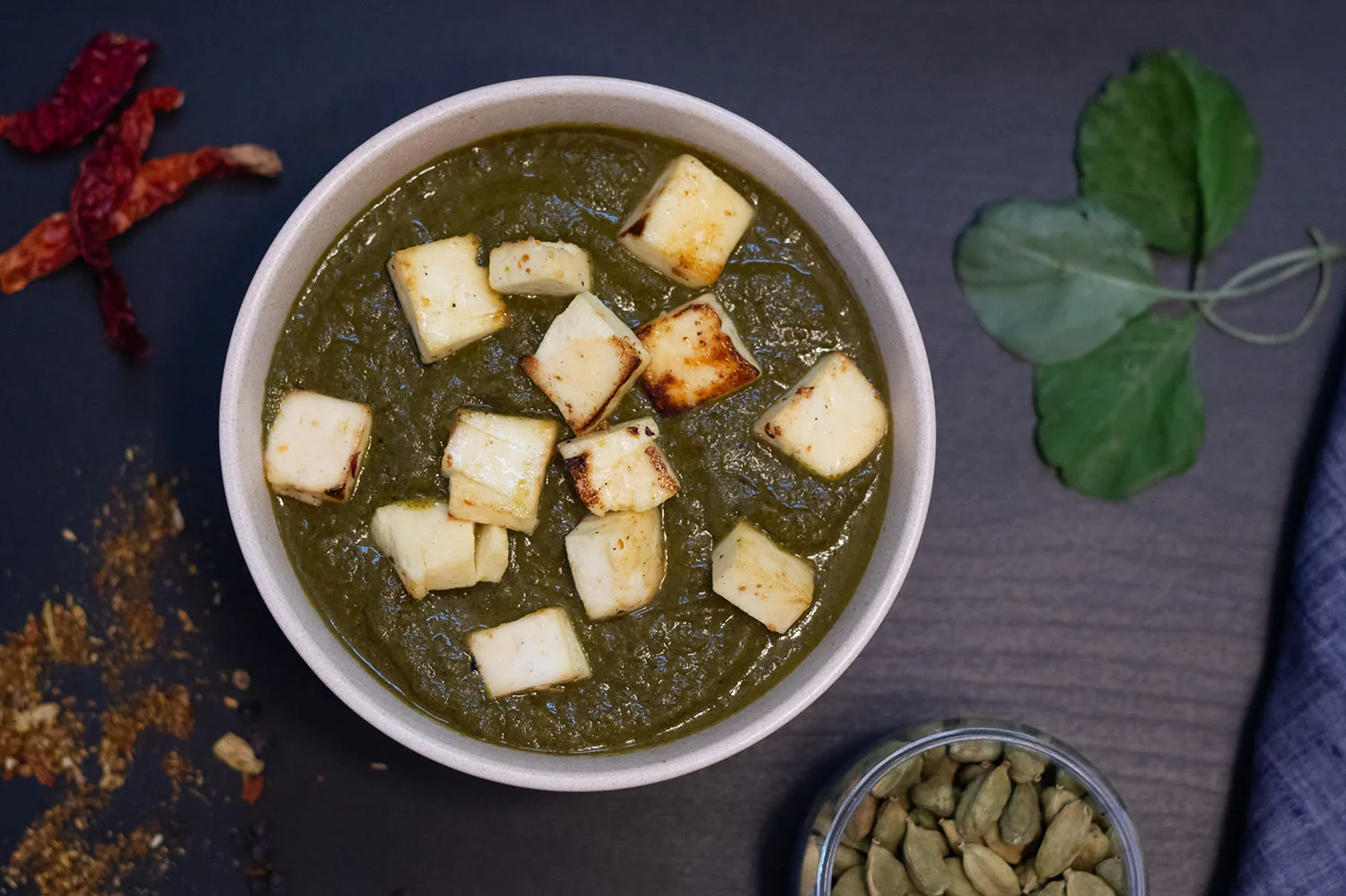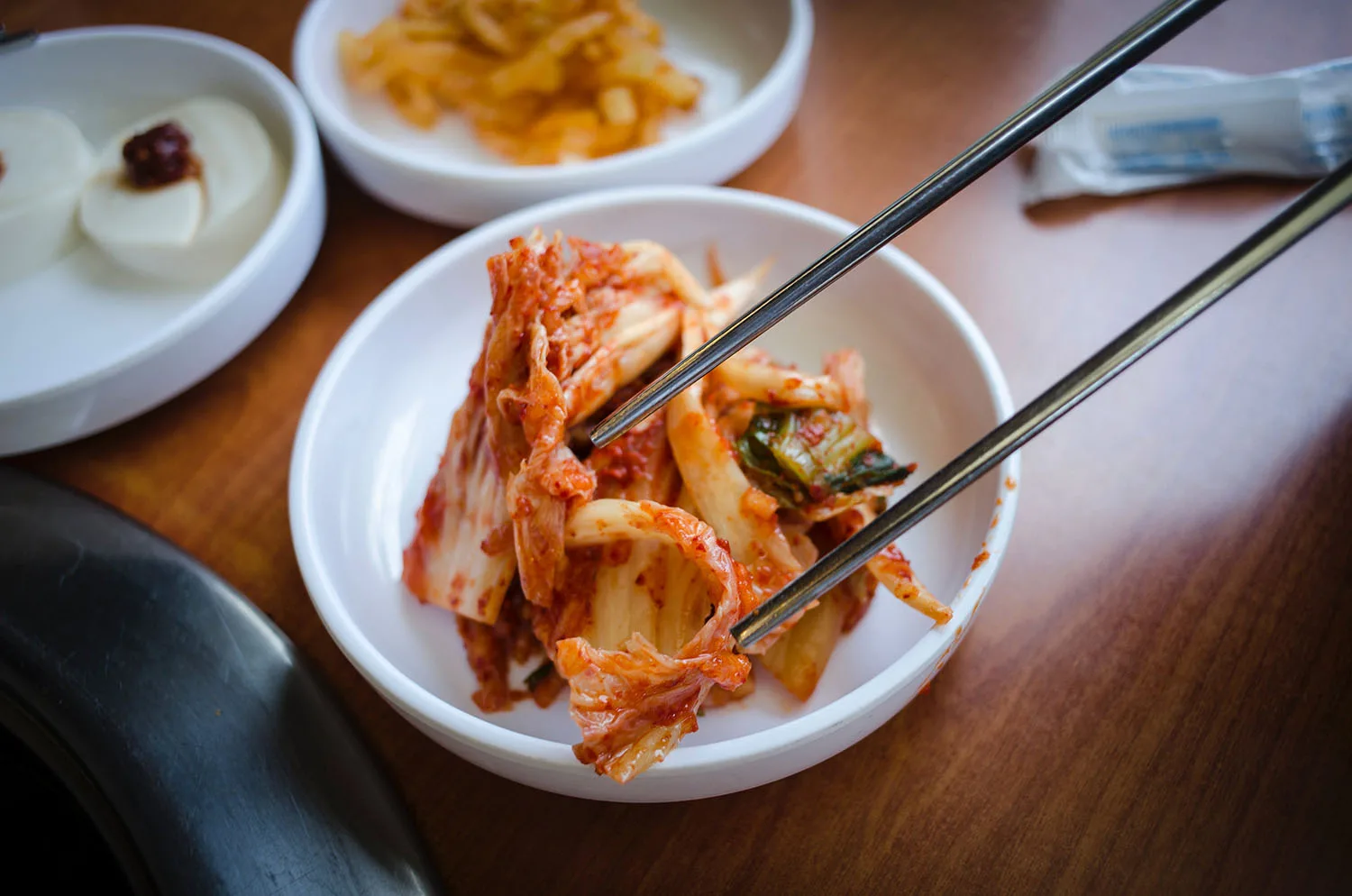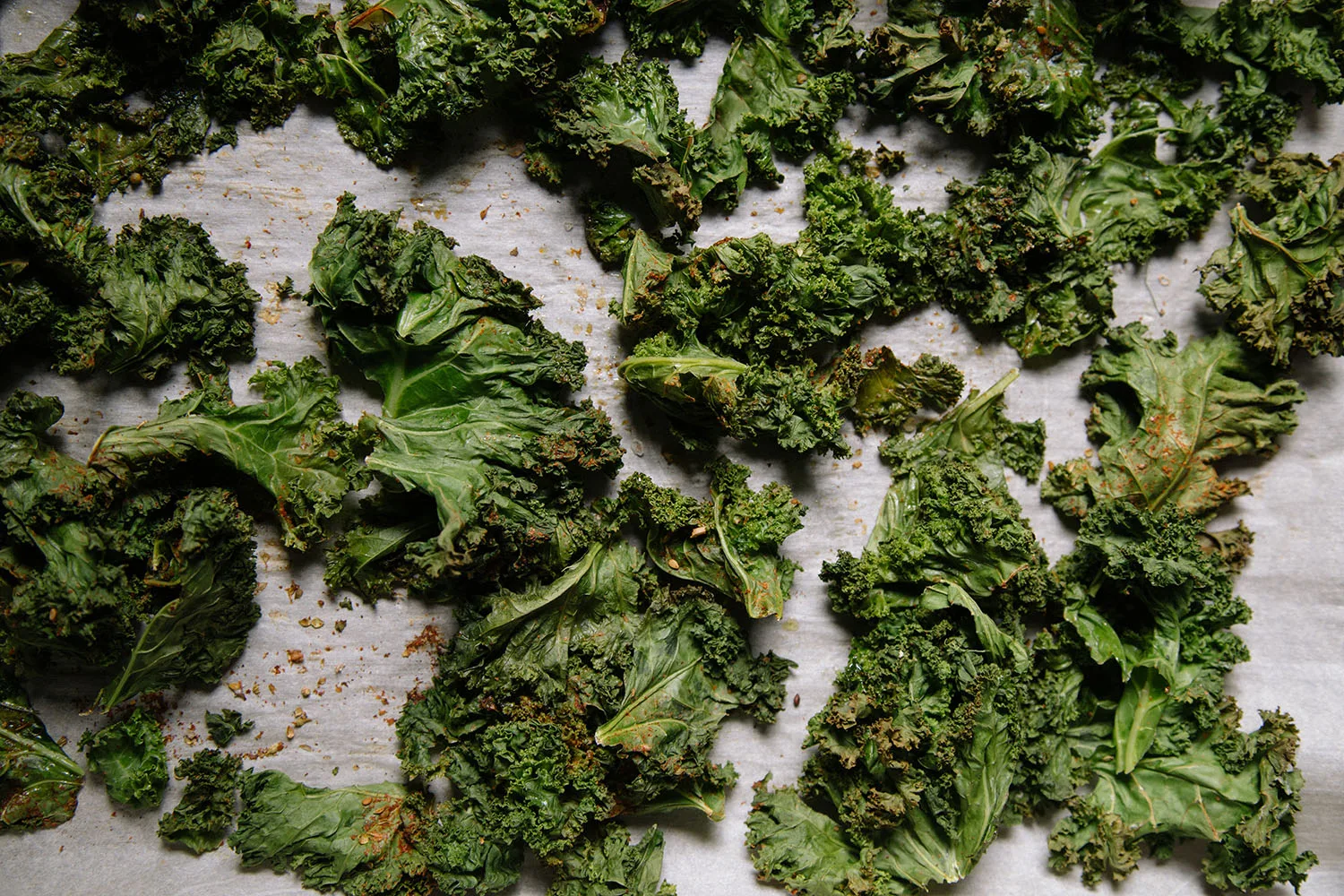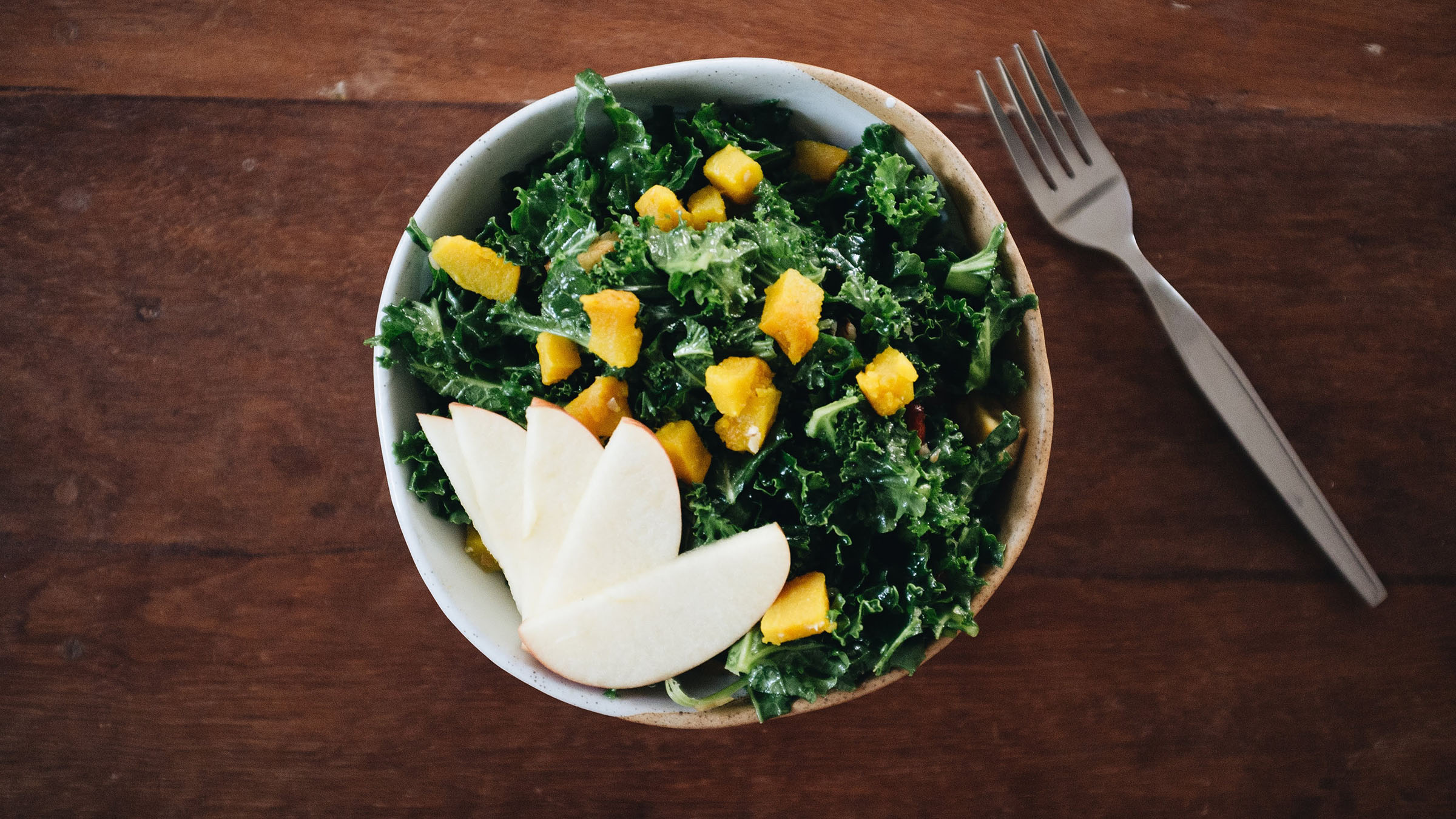After the holidays, we tend to find ourselves grateful for loved ones, but a little less grateful for our newly acquired love handles; January is a great time to refresh, reset and treat our bodies right. When it comes to healthy resolutions, greens – crunchy, leafy and vitamin-packed – are a tasty tool for achieving our nutritional goals. Salads, however, don’t always hit the spot during the chilly season when we’re craving creature comforts. To spice things up while trying to tone up, we’ve tracked down flavour-packed recipes from around the world that feature greens as the star ingredient.
Cicoria Ripassata
Cicoria ripassata is a year-round staple and graces just about every Roman trattoria menu. Bitter green strands known as cicoria (chicory), or dandelion greens, start with a rolling boil. Drain while still bright green, and place in an ice bath to preserve the vibrant colour. In a frying pan, heat olive oil, a garlic clove and some peperoncino (dried red pepper). Drain the greens and toss until well coated. Serve at room temperature. Salt and pepper to taste.
Horta
Horta is to Greek tavernas as cicoria is to the Roman trattoria: a blast of fresh greens to accompany other dishes, and incredibly easy to make. Horta is Greek for ‘wild greens’, and it’s a forager’s dream. You can use whatever’s local and in season, including (but not limited to) dandelion greens, spinach, chard, sorrel, and collards. The key is to wash them carefully and remove all roots and stems. Parboil until tender. Drain, and toss in a pan with olive oil, salt and a generous spritz of lemon juice.
Palak Paneer
There’s nothing like the soulful spices in traditional Indian cooking to warm you up in the winter months – and this recipe brings a lot of heat. Green chilies, cumin, cinnamon, cardamom and ginger are renowned in Ayurveda for their energising properties. Palak paneer simmers spinach with tomatoes and onions to a melt-in-your mouth consistency, and tops it off with cubes of tangy paneer cheese. This dish is traditionally served alongside other dishes and rice or naan bread. It’s so tasty, though, you could skip the carbs all together.

Braised Endive
Leafy, healthy and versatile, endive counts as a green in our book; in French tradition, it begins with butter. Feel free to substitute with olive oil or your preferred vegetable oil. Warm the butter in a large frying pan. Be sure it’s outfitted with a lid for later use. Lay the endives whole along the bottom, and drizzle with lemon juice and salt. An optional touch of sugar will lessen the bitterness. Add water carefully so as not to wash away the salt, then cover tightly and simmer over medium heat for up to 40 minutes; you can also do this in the oven. Finish browning the endive back on the stovetop until the edges are golden and crispy.
Kimchi
A true labour of love, kimchi is a 24-hour-long process that will leave your kitchen smelling a bit funky, but your heart and belly will thank you for it. A proven probiotic, kimchi is not only a Korean comfort food and a foundation for other recipes, it’s great for gut health. There are many variations on the recipe, but the process always involves creating a spice-rich paste to coat your pickled cabbage. Key spices include gochugaru (Korean hot pepper flakes), ginger, fish sauce and garlic. Fermentation is what gives this dish its tangy and irresistible quality: that starts with brining the napa cabbage. Rub salt on your cabbage, immerse in saltwater and seal it up for six hours while nature takes its course. In the meantime, prepare your paste with spices, rice flour and veggies. Once the cabbage is ready, coat the leaves with the paste, cover and leave out to continue fermenting overnight. Chill it the next morning, package into jars and savour it for days. It only gets better!

Stir-Fried Choy Sum
Chinese food rarely tops the list of healthy choices. Many of us are used to slurping up soup dumplings, devouring dim sum by the cartful, and stuffing ourselves with Szechuan noodles. Surprise, surprise: Chinese cuisine might just take the prize for the variety of greens on offer. From Chinese broccoli to baby bok choy, a well-stocked Asian market will feature mountains of luscious leaves. Choy sum, sometimes known as yu chou, has tender bulbs and stems, as well as wide, flat leaves. It requires no blanching to soften it up, which makes this recipe as quick as it is delicious. Simply sauté garlic and ginger, then add your rinsed and chopped choy sum. It’s best to separate the stems from the leaves and cook them first. Toss with cooking wine and sugar, cover and steam for a few minutes. To finish, drizzle with oil and salt.
Gomen Wat
Ethiopian cuisine is known for next-level veggies, and gomen, or ye’abesha gomen, is super popular and easy to make. One key to the rich consistency and depth of spice is an aromatised, clarified butter called niter kibbeh. No niter kibbeh on your supermarket shelves? No problem. It’s a breeze to make, and may inspire you to experiment with more Ethiopian dishes. You can use collard greens or kale for this recipe. Start with a dollop of niter kibbeh in the pan. Sauté onions, garlic, ginger and spices and toss with chopped greens until just wilted. Add more spices and butter to taste!
Crunchy Baked Kale Chips
Kale chips are no passing trend. Crunchy, savoury and always satisfying, they can even quench a craving for crisps. With only five ingredients, this recipe is quick and easy, but one step is crucial: massaging the chopped kale leaves with olive oil prior to seasoning them tenderises the leaves and ensures they’ll cook evenly. Toss with your favourite dry spices; this recipe uses almond meal and garlic powder, but you can literally empty your spice rack here. Distribute the leaves on a pan and roast at low heat for up to 45 minutes. Give them a turn halfway through to make sure they brown evenly. Cool completely before serving.

Broccoli Rabe with Caramelised Onions
Broccoli rabe is beloved for its bitter, crunchy goodness. This super simple take on sautéed broccoli rabe balances bitterness with sweet caramelised onions. Start by browning onions in a pan with olive oil and a pinch of salt. Once they are golden-brown and soft, set aside. Toss your washed and chopped broccoli rabe with olive oil, a dash of hot red pepper and garlic, and that’s it. Combine your ingredients and devour guiltlessly.
Hindbeh
One of Lebanon’s most beloved vegetable sides also employs caramelised onions, but this time over garlicky, tangy spinach. Start by finely slicing the onions and sautéing them for up to a half an hour for optimal sweetness and softness. In a separate pot, steam the spinach and drain. Grate raw garlic and over the top and drizzle with lemon juice, olive oil, salt and pepper. Top your greens with the cooled and caramelised onion mixture. This dish can be served warm or cold and makes an excellent topping for pita-style flatbread.
Callaloo
You’ve likely heard of the ancient grain amaranth, but did you know it starts with a leafy green? In the Caribbean, it’s referred to as callaloo. Tasty and tender, imagine a hybrid of spinach and collards. Look for fresh callaloo at Caribbean and African markets, or substitute with another green. This recipe starts with fresh and springy greens. After chopping, soak it for a few minutes or even overnight to keep it moist. Drain completely. In a large saucepan, heat coconut oil, some butter (or extra oil) and sauté the onions first. Add the greens and finally the tomatoes. Sea
Green Goddess Soup
Leafed Out? There are other green veggies out there, and this soup uses all kinds, including kale, broccoli, fennel, leeks, peas and celery. Garlic, onions, allspice and cumin really make this soup come to life. Potatoes and cream make it, well, creamy. A vegan option swaps out cream for almond milk or extra fennel. When parboiled and blended to a smooth consistency, fennel is sweet, creamy and seemingly sinful.














Sorry, the comment form is closed at this time.